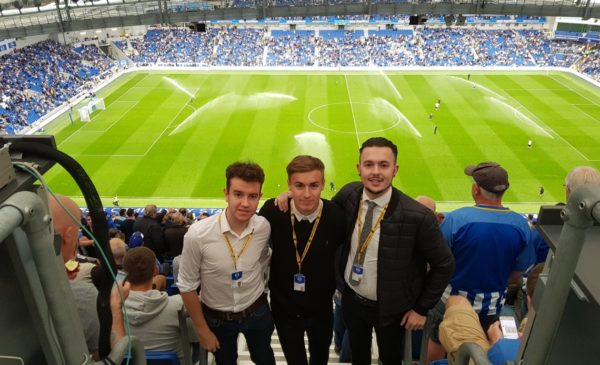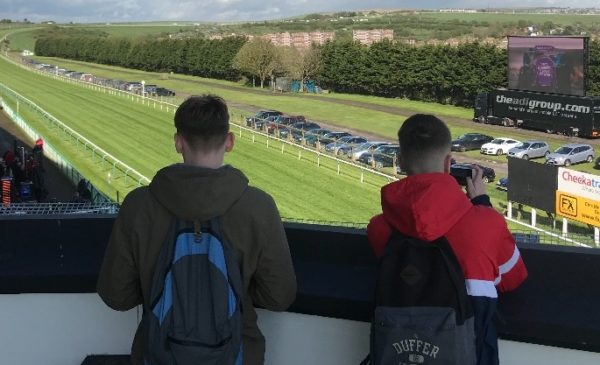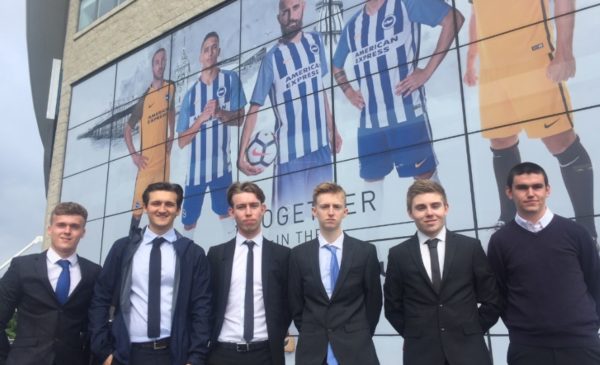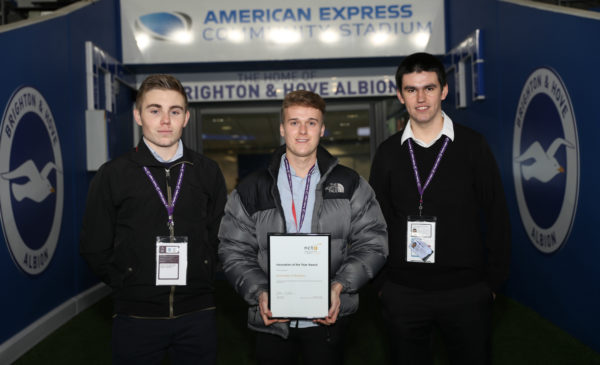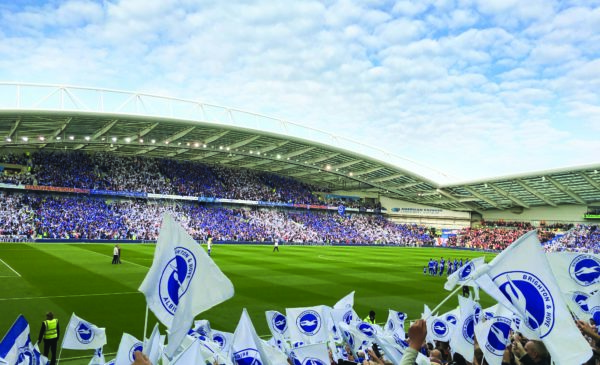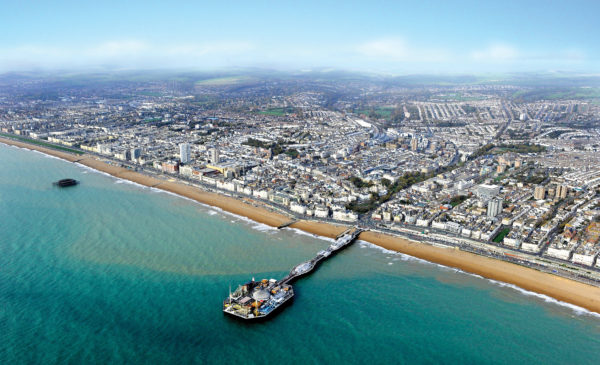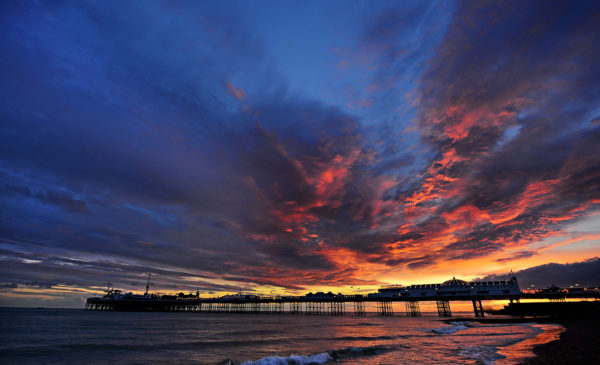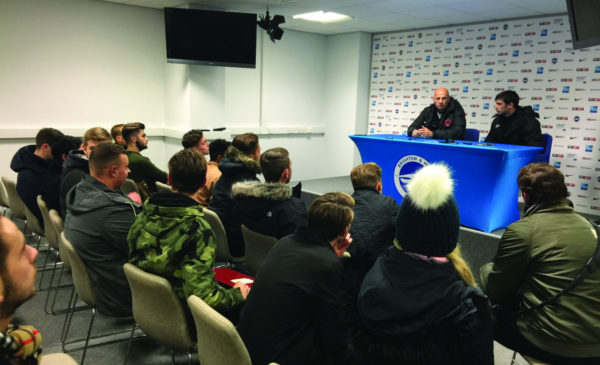By Lydia Coggins
Within a few seconds of meeting Steve Allnutt, a 41 year old full-time NHS worker and all-of-the-time diving enthusiast from Worthing in Sussex, he couldn’t help but voice his frustration at how Sussex’s coastal waters have been treated over the years. He has a genuine air of urgency and concern, and he’s adamant that we should not be leaving the problem of Sussex’s declining marine life to someone else to fix.
Steve has been diving in Sussex since he was 12 years old and has written hundreds of letters to every marine convservation charity that exists to try and prevent Sussex’s marine life from disappearing. Recently his efforts have been gaining momentum as more people are noticing the changes to our coast. As he eagerly explains to me one evening over Skype, restoring and regenerating lost underwater marine biodiversity, more specifically miles of underwater kelp forests that has been lost -is absolutely crucial. If you are intrigued to hear how a local freediving tradition has turned a group of renegade locals to take it upon themselves to save our ocean. Or how a seemingly unremarkable kelp plant is the number one engineer of our marine ecosystem, read on.
Starting an ocean restoration project in 2020 during the pandemic might seem unusual when the majority of environmental news published during lock-down addressed polution on land and in the air. How on earth does one man go about about planning to restore the entire seabed to its former glory? With a moedst team of a few local divers, plus a lifeguard or two, a cameraman and one marine scientist no less? It’s impossible not to appreciate Steve’s DIY attitude or the beauty of the crystal-clear underwater photography he and his followers are posting on the web. Steve’s freediving has attracted the attention of over 10,000 people on social media, and he has appeared in an panorama interview with ITV. As avant-garde as it all sounds, rewilding the ocean floor is a tall order, but just maybe, Steve is onto something.
Glad to escape the damp drizzle of a wet and windy February evening and retreat to the dry parlour of a quaint beachfront hotel in Worthing. I sat down for a chat over a G&T to discover what he is up to.
“It just shows you if we are kinder to nature that it can slowly recover.” Steve Allnut, pictured above on Worthing beach.
What got you inspired to dive and get involved in marine conservation?
So this goes quite far back. There was actually an original group of divers who started off documenting the seafloor around in the 1960’s. Basically, popularity for marine conservation kicked off after the Second World War when a lot of attention was focused on various ocean and conservation icons at the time. The sea was the new place, the new frontier to discover. Because Sussex has such a shallow bay it became the spot for freediving and scuba diving. My grandad was part of the original group of divers in Worthing, he taught me to dive and was the photographer for the group. Some of the divers had underwater cameras which was completely unheard of back then.
What is so great about free diving in Sussex?
People don’t realise the water can be so clear in Worthing and in Bognor and you can see everything in the right conditions. Seeing the sunrise is a perfect way to start off your day. I usually dive from April to Mid-September. I just get up early in the morning, get my wetsuit on and go down the beach and explore. It really wakes you up in a mindfulness kind of way. One of my favourite spots to freedive is down at Bognor Rocks, it’s an area protected by a reef and since the pandemic there has been a lot less fishing activity there. As a result, I have seen more juvenile fish than I have ever seen in my life.
What does the seabed look like now compared to what you have seen when you first started to dive?
I’ve been doing this a long time and you can really see it (the decline.) There are literally what can only be described as miles of huge ocean graveyards, it’s decimated, it’s so shocking. There is now only 3-4 percent of kelp forests left due to unsustainable fishing. Kelp used to cover a 200 mile stretch of seabed all along East and West Sussex. A huge area. There’s only one type of kelp growing now in West Sussex. Bottom trawler fishing boats remove the fish and plant life on the seabed each year during springtime just as everything starts to regrow. It’s left the seabed in a terrible state. I used to lie awake at night thinking what can I possibly do about this? Not to be arrogant but I had this thought that if I don’t do something about this now, then who will?
Why is this project you’re doing so important? Why now?
I set up Sussex Underwater in April of 2020 to document and film the seabed recovery. The following year the IFCA finally approved the Sussex nearshore by-law in March 2021 which was incredible news. I’ve been campaigning to ban trawler fishing practices for the past 20 years. It is now illegal to do it for the first time in the whole history of Sussex!
After the by-law was introduced, I realised that this was an amazing opportunity to start regenerating the area. The biggest obstacle for big conservation charities to tackle the declining kelp is all the red tape, the insurance and of course the cost. It is just too big a project for larger charities to take on, it’s not an easy thing to do. So, I felt we had no option but to go rogue with a home-grown approach and involve all the locals to help us do it. In February this year, I created The Sussex Seabed Restoration Project which is a Community Interest Charity, and we’d love to recruit about 60 volunteers to help us once we’ve secured the right funding and licences.
How do you plan to rewild the seabed and bring the kelp back?
There are quite a few reasons why the kelp has been affected but there are ways we can help it regrow. One way is to collect and grow kelp seedlings and replant them back into the seabed so they can flourish. By working with other kelp growers from around the country we can hopefully replenish what has been lost. Divers and paddle boarders can get involved in the replanting.
Another way we are hoping to help the fish recover is by collecting cuttlefish eggs that get washed up on the beach during storms, we successfully did this last year. Because there isn’t any kelp to act as a nursery for the cuttlefish eggs, they just get washed up onto the beach in bad weather, they don’t survive. But by starting a cuttlefish nursery and setting up large tanks, we could get the community to collect them and once they are ready, return them back into the sea so they can thrive.
When did you realise that positive change could happen, and this could really work?
Last year I saw so many cuttlefish get hammered by the fishing industry by boats that scoop up absolutely everything from the seafloor using big nets. This year I saw lots of baby fish hatching because there had been no trawler boats allowed in the area. Last year there were the most sightings of dolphins on record across Sussex. It just shows you if we are kind to nature that it can slowly recover. All is not lost and that lifted my hopes.
“All is not lost and that lifted my hopes.”
Steve’s enthusiasm is infectious and he’s obsessed with making a difference by tackling the problem on a personal level. It’s hard to believe that the remarkable vivid array of colourful fish and aquatic plant life captured on camera is in Sussex. People like Steve are important because he reminds us of what is out there.
Ultimately, we should all be backing projects like this one. As the saying goes ‘a rising tide will lift all boats,’ and looking after our ocean is sure to benefit us all. To see what is under the surface of our coastline join Steve’s group on Facebook @ Sussex Underwater to keep up to date with his plans and see how you can support him.

